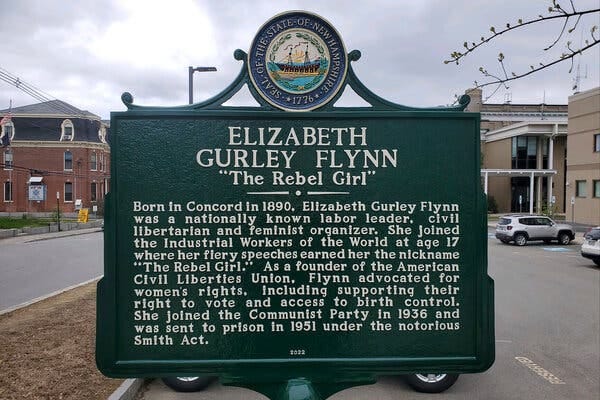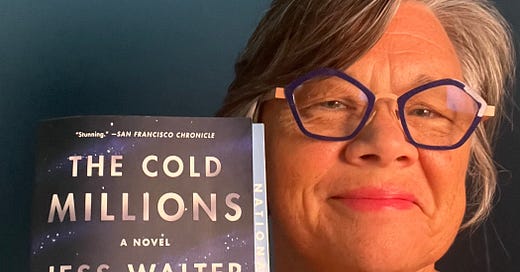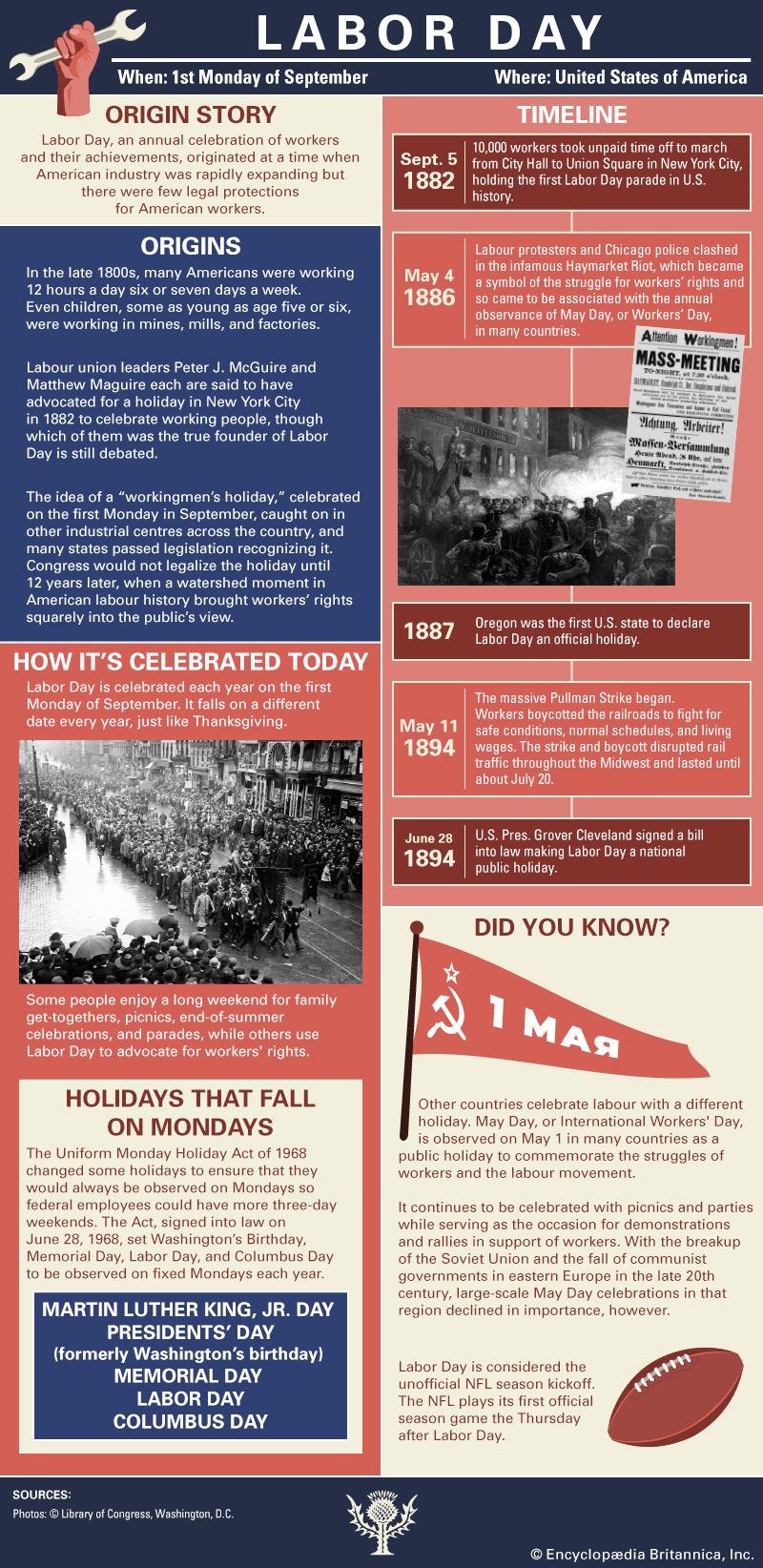I’m reading an excellent novel, The Cold Millions, by my new literary crush Jess Walter. You may be more familiar with Walters’ earlier book, The Beautiful Ruins, which was set in Italy and achieved runaway success.1
Walter set The Cold Millions mostly in Spokane, where two orphaned brothers go looking for work in a city of about 40,000 residents, which, by 1909, had produced 26 millionaires. You might think the title refers to these millionaires’ fortunes, but no. The cold millions were people who worked hard but couldn't afford basic comforts like warmth, food, and gloves. Charles Dickens’ England had nothing on Jess Walter’s Pacific Northwest.
I recommend this terrific book on Labor Day to acquaint (or reacquaint) ourselves with labor history and the union movement. My grandmother (now deceased) was a little girl when her father fought for union representation in Eastern Kentucky’s coal mines during the 1930s. She remembers going from sick, hungry, and barefoot to having enough food and a pair of winter shoes—thanks to the United Mine Workers of America.
Historical and Fictional Characters
The Cold Millions is a story about the Industrial Revolution, with a mix of real and fictional characters. The cast includes Elizabeth Gurley Flynn, a teenage labor organizer who gave her first political speech at age 15. She became a founder of the American Civil Liberties Union, an organizer for the Industrial Workers of the World labor union and, eventually, a leader of the Communist Party of the United States. Her bold actions earned her the nickname “Rebel Girl,” and a historical marker in the city of her birth, Concord, New Hampshire. People who got the vapors2 reading the words Communist Party removed the marker two weeks after its installation.

Here’s a video of Jess Walter talking about his book and its significance in the present day, when we’re also facing homelessness, income inequality, police brutality, and a continuous cycle of protests and civil unrest. It was chosen by the National Endowment for the Arts’ Big Read program for 2022-23.
Organized Labor
The Cold Millions introduces readers to the International Workers of the World, or IWW, a labor union often known as the “Wobblies.” The IWW didn’t exclude women, certain racial and ethnic minorities, or “unskilled” workers from membership, as the other unions did. Anyone with a job (or who was between jobs) could join the IWW. The Wobblies wanted what they called One Big Union for class solidarity and hoped to see a day when “Workers would show their bosses the door, take possession of every factory, mine, warehouse, and office, and run the economy for the benefit of all.”
That did not pan out.
May Day or Labor Day?
President Grover Cleveland signed legislation in 1894 to commemorate Labor Day on the first Monday of September. The graphic below, courtesy of Encyclopedia Britannica, summarizes how and why it became a national holiday.
Note the last block on the bottom right that compares Labor Day to May Day, another labor holiday. May Day honors the struggles of the labor movement, while Labor Day celebrates workers and their accomplishments—a typically upbeat American approach. May Day has been adopted by anti-capitalist and anti-globalization protesters in England, France, and Germany.
Today’s Labor Day has nothing to do with celebrating the American worker. The digital ads I’ve been getting are bedecked in red, white, and blue as if it’s another version of July 4. Its only remaining significance is marking the end of summer vacation season and the NFL’s season kickoff.
Just for fun, as you stand around the grill or swimming pool today, turn to someone and ask what the heck Labor Day is supposed to be celebrating. I’m dying to hear the answers—comment below.
Do you have a favorite book about the labor movement? Please let me know and I’ll include it in a future newsletter. Thanks for reading.
Accolades:
#1 Bestseller
New York Times Notable Book of the Year
Washington Post Notable Book of the Year
NPR Fresh Air Novel of the Year
Esquire Book of the Year
In UK, Guardian, Times and Sunday Times Best Books of the Year
Best Book of the Year: Entertainment Weekly, Publishers Weekly, Kirkus Reviews, San Francisco Chronicle, Miami Herald, Seattle Times, The Oregonian, St. Louis Today, Kansas City Star, Goodreads, Hudsons, Barnes and Noble, Amazon
In archaic usage, the vapours (or vapors) is a mental, psychological, or physical state, such as hysteria, mania, clinical depression, bipolar disorder, lightheadedness, fainting, flush, withdrawal syndrome, mood swings, or PMS in which a sufferer loses mental focus.






Well said Tamela!
The Last Ballad by Wiley Cash is a great story about a young woman and her efforts to fight for labor in Gastonia. https://www.wileycash.com/the-last-ballad